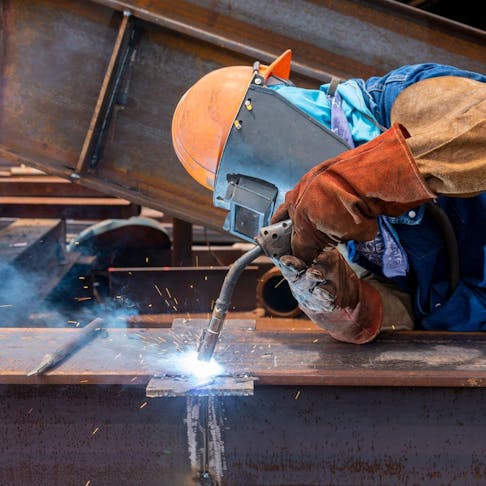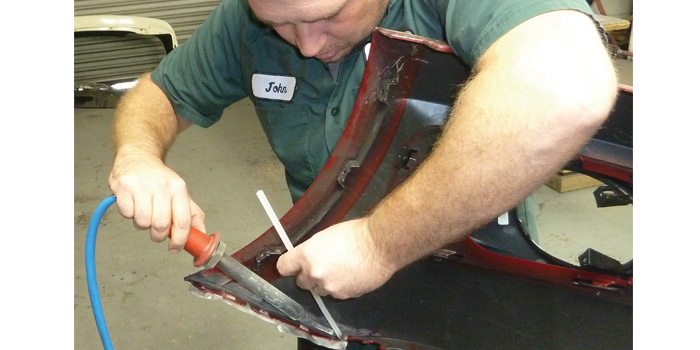All About Welding: Trick Insights Into Techniques and Finest Practices for Success
Welding encompasses a variety of methods, each suited for particular products and applications. Comprehending these techniques, such as GMAW, SMAW, and TIG, is crucial for achieving excellent outcomes. Furthermore, the right devices and safety and security techniques can not be ignored. As prep work and fixing play vital functions in the welding procedure, mastering these aspects can considerably improve the quality of the end product. What are the essential variables that ensure a successful weld?
Understanding Different Welding Methods
Welding techniques incorporate a selection of methods, each suited to specific applications and materials. Amongst the most usual techniques are Gas Metal Arc Welding (GMAW), Shielded Metal Arc Welding (SMAW), and Tungsten Inert Gas Welding (TIG) GMAW, also known as MIG welding, is preferred for its speed and flexibility, making it perfect for slim materials. SMAW, or stick welding, is favored for its simplicity and efficiency in exterior environments, especially with thicker steels. TIG welding provides precision and control, making it ideal for complex job and non-ferrous steels (Montana Mobile Welding and Repair Fabrication). Each strategy has its distinct benefits and considerations, permitting welders to select the most effective technique based upon the task's requirements, product type, and preferred results. Recognizing these methods is important for effective welding
Essential Welding Devices and Devices
While numerous welding techniques call for specific skills, the best devices and devices are just as vital for accomplishing top quality outcomes. Vital welding devices consists of welding machines, which differ depending upon the method-- such as MIG, TIG, or stick welding. Protective gear, including handwear covers, aprons, and helmets, assurances security and convenience throughout the procedure. Furthermore, clamps and fixtures aid protect materials in area, guaranteeing accuracy in welds. Consumables like welding poles, wire, and protecting gas are likewise important elements that affect the high quality of the weld. Devices such as mills and cutters assist in surface area preparation and post-weld ending up, contributing to a professional end result. Investing in high-quality equipment ultimately boosts the effectiveness and effectiveness of welding tasks.
Security Practices in Welding
Appropriate safety practices are important in the welding sector to shield employees from possible dangers. Welders must wear suitable personal protective equipment (PPE), including headgears with proper shading, handwear covers, and flame-resistant clothes. Appropriate ventilation is essential to decrease exposure to hazardous fumes and gases created during the welding process. In addition, employees should be educated in the correct handling of welding tools to stop crashes. Fire precaution, such as maintaining flammable materials away from the welding location and having fire extinguishers readily offered, are needed. Regular assessments of equipment and workspaces can assist identify possible hazards before they cause crashes. By sticking to these safety and security practices, welders can produce a more secure working atmosphere and minimize risks connected with their trade.
Preparing Products for Welding
Preparing products for welding is a vital step that considerably affects the quality and stability of the end product (Welding). Correct prep work entails cleaning the surfaces to remove impurities such as oil, dirt, and rust, which can jeopardize the weld. Methods such as grinding, fining sand, or utilizing solvents are generally used to attain a clean surface area. In addition, guaranteeing that the materials fit together snugly is vital; spaces can result in weak welds. It's also vital to consider the alignment and positioning of the parts, as this will influence the simplicity of welding and the last result. Choosing the ideal filler material and guaranteeing compatibility with the base steels is vital for attaining strong, durable welds.
Tips for Achieving High-Quality Welds
Achieving high-grade welds needs attention to information and adherence to best techniques throughout the welding process. Proper joint prep work is important, making sure surface areas are cost-free and tidy from impurities. Choosing the appropriate filler product and welding method based upon the base metals is critical for optimal bonding. Maintaining constant travel rate and angle while welding can stop flaws and advertise uniformity. Additionally, controlling warm input is essential; too much heat can cause bending and deteriorated joints. If essential, routinely inspecting the welds throughout the procedure allows for prompt modifications. Employing suitable post-weld treatments, such as cleansing and stress alleviation, can enhance the toughness and honesty of the weld, eventually ensuring an effective end result.
Fixing Typical Welding Issues
Welding frequently presents difficulties that can affect the quality and integrity of the last item. Common problems such as porosity, irregular weld beads, and overheating can develop, each calling for details repairing strategies. Recognizing these issues is crucial for welders to enhance their abilities and achieve ideal outcomes.
Porosity Troubles Described
Porosity can commonly be neglected, it continues to be an important problem in welding that can endanger the integrity of a finished product. Porosity describes the presence of tiny gas pockets within the weld bead, which can deteriorate the joint and lead to early failing. This problem normally arises from contaminants, wetness, or inappropriate securing gas coverage during the welding process. To reduce porosity, welders ought to validate that the see it here base materials are dry and tidy, use ideal protecting gases, and preserve consistent welding parameters. On a regular basis checking the devices and setting can also aid recognize potential issues before they materialize in the weld. Resolving porosity efficiently is necessary for achieving solid, sturdy welds that satisfy high quality criteria.

Irregular Weld Beans
Irregular weld grains can substantially influence the top quality and toughness of a finished item. Different factors add to this issue, including incorrect travel rate, inaccurate amperage settings, and irregular electrode angles. When the welder relocates too quickly, a grain might appear slim and lack penetration, while relocating too gradually can cause too much accumulation. Furthermore, utilizing the incorrect amperage can result in either undercutting or too much spatter, both of which compromise weld integrity. The welder's method, such as irregular lantern activity, can also result in irregular grain appearance. To minimize these issues, welders need to concentrate on maintaining constant, controlled motions and ensuring correct equipment settings to achieve uniformity in their welds. Consistency is vital to attaining trusted and solid welds.
Getting Too Hot and Bending Issues
Extreme warmth throughout the welding process can cause substantial getting too hot and deforming concerns, impacting the structural honesty of the workpiece. These problems typically materialize as distortion, which can endanger alignment and fit-up, making more setting up testing. Aspects adding to overheating consist of the selection of welding parameters, such as voltage and take a trip speed, as well as the kind of material being welded. To minimize these problems, welders must keep constant traveling rate and proper warm input while checking the workpiece temperature. Furthermore, pre-heating or post-weld heat treatment can assist minimize stresses brought on by fast cooling - Montana Mobile Welding and Repair Fabrication. Normal assessment and adherence to best methods are necessary in preventing getting too hot and making certain the long life and my explanation integrity of welded frameworks
Often Asked Concerns
What Are the Profession Opportunities in the Welding Market?
The welding sector provides varied career possibilities, consisting of positions as welders, educators, engineers, and assessors. Professionals can operate in production, construction, aerospace, and auto sectors, gaining from strong need and competitive wages in numerous functions.
How Can I Boost My Welding Speed Without Giving Up High Quality?
To enhance welding rate without sacrificing high quality, one should practice effective techniques, maintain devices, enhance settings, and boost hand-eye sychronisation. Routine training and seeking responses can also significantly add to attaining faster, premium welds.
What Qualifications Are Readily Available for Welders?
Various qualifications exist for welders, consisting of those from the American Welding Society (AWS), the National Facility for Construction Education And Learning and Study (NCCER), and numerous industry-specific organizations. These credentials boost employability and show skill efficiency.
Just How Does Welding Affect the Residences of Metals?
Welding affects the buildings of steels by modifying their microstructure, which can bring about changes small welder in stamina, firmness, and ductility. Warm input and cooling rates during the procedure considerably affect these product qualities.
Can I Weld Dissimilar Metals With Each Other?
